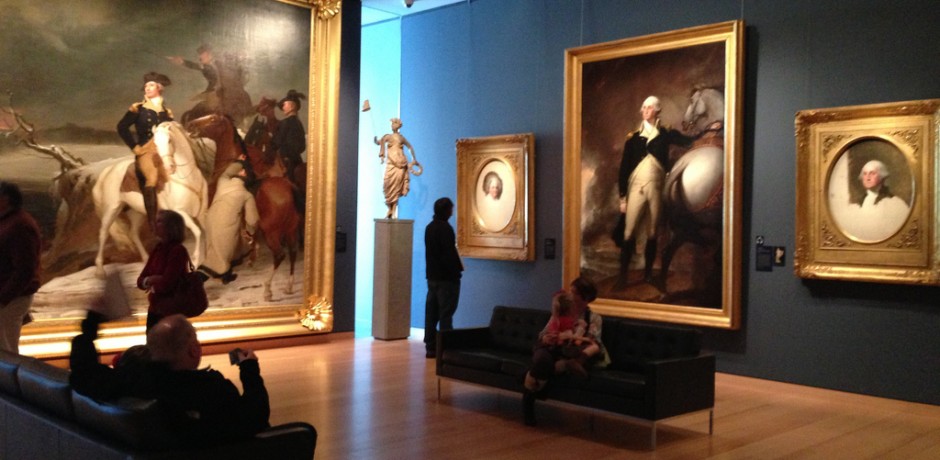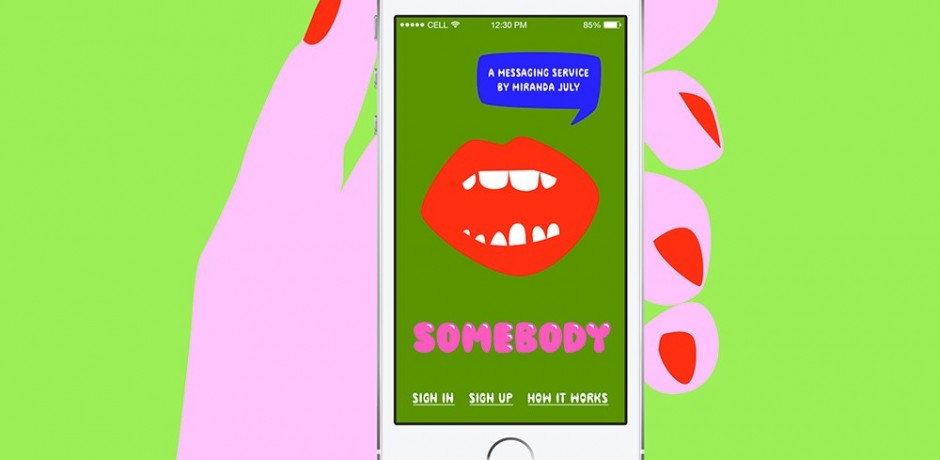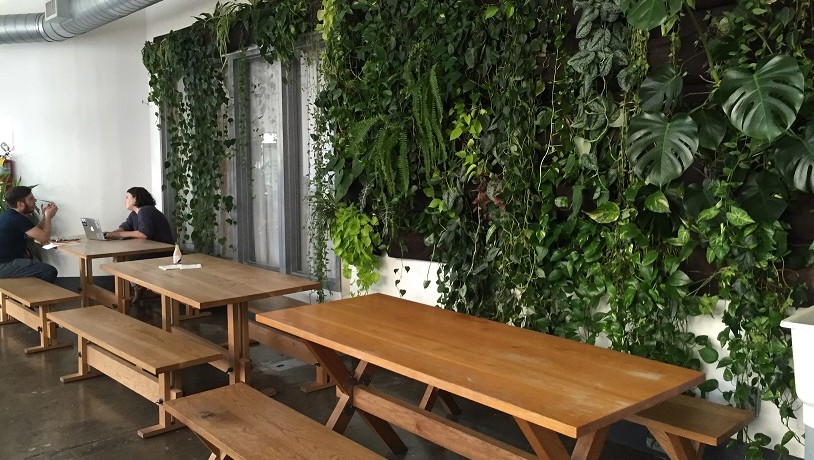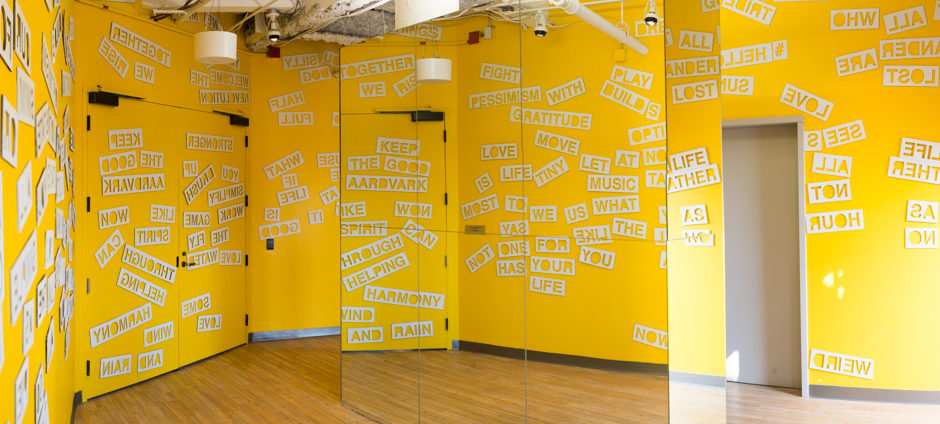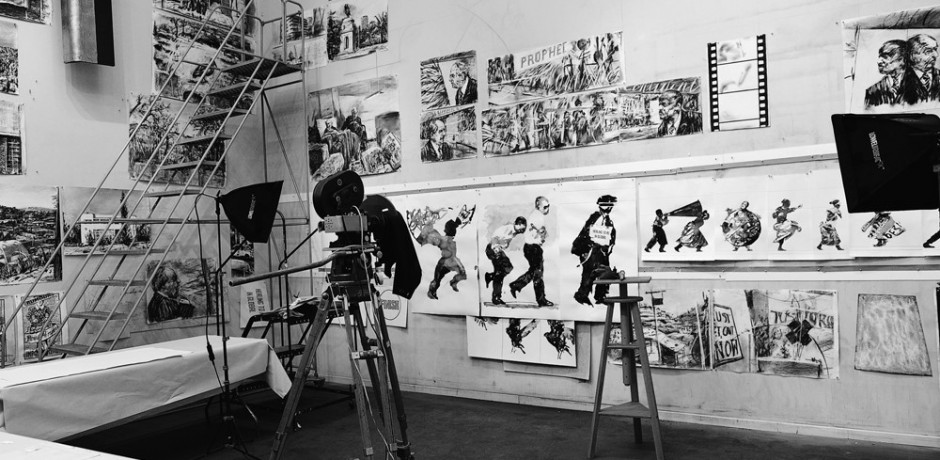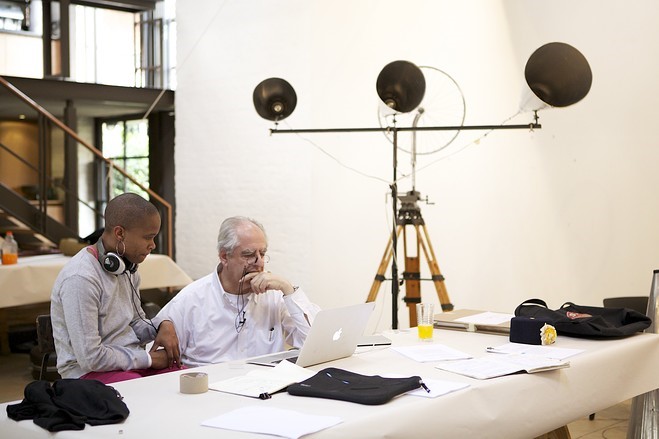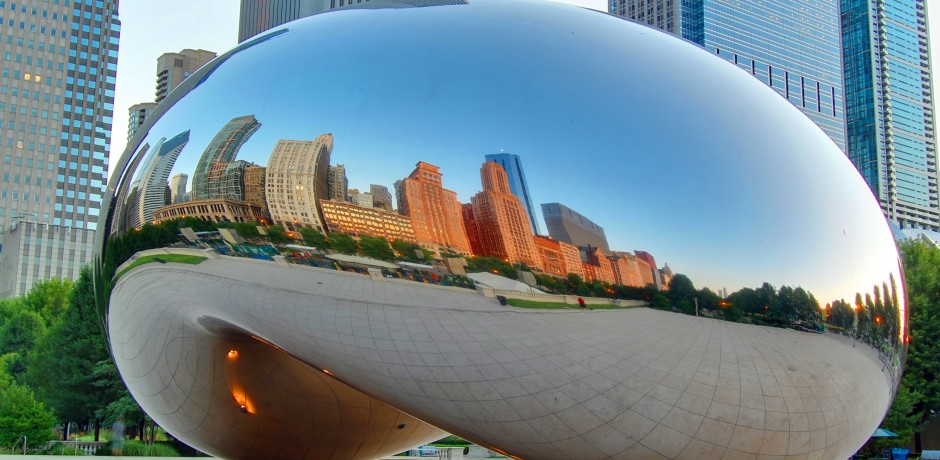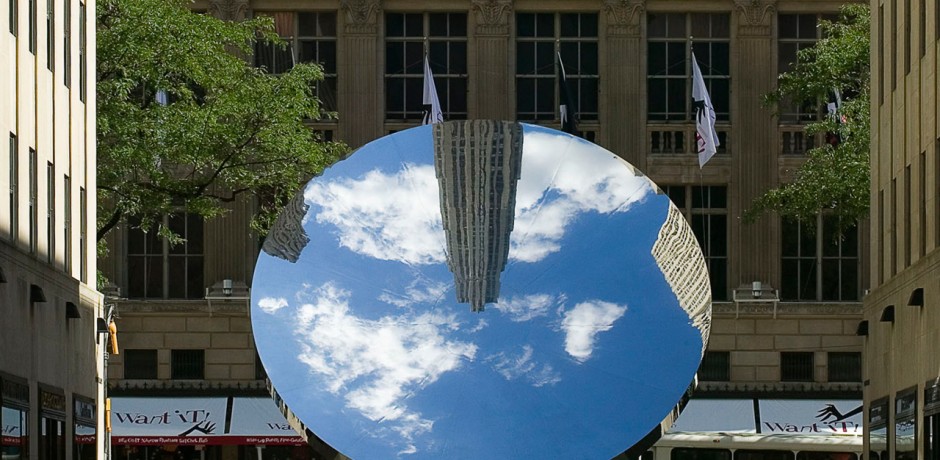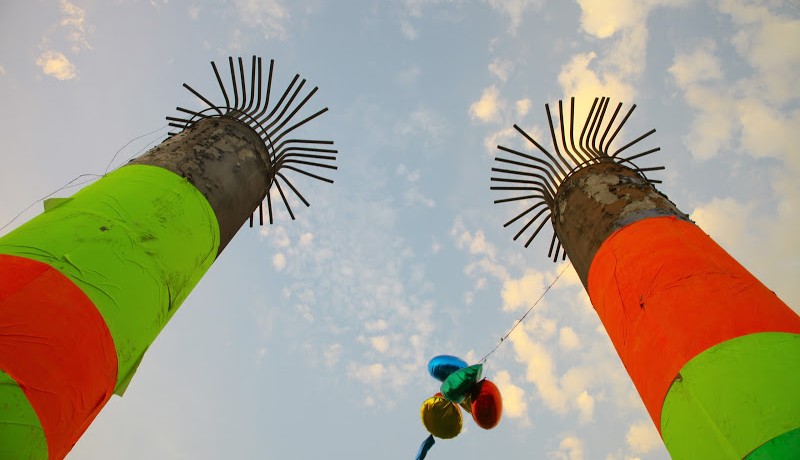Our Blog
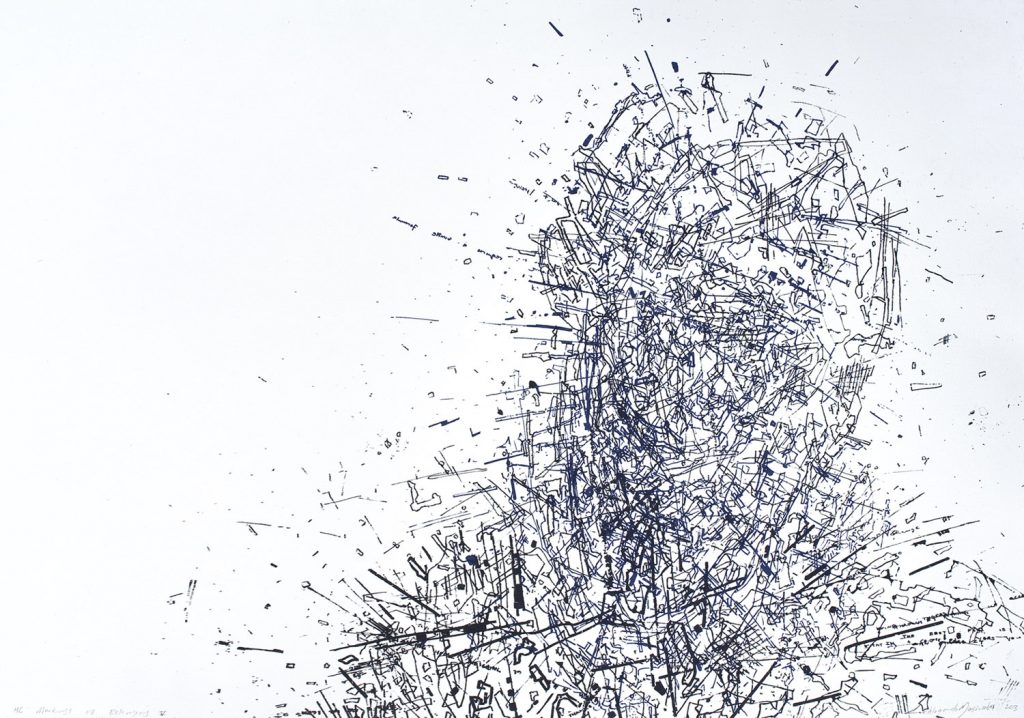
Lehlogonolo Mashaba (South African, b. 1983). Markings Of Belonging V (Studio), 2014. Ink on paper.
How can the arts be used to help humans gain cultural awareness in order to benefit the collective whole?
When I first encountered this question I was a little dumbfounded. I could not tell the question’s head from its tail. At first, I identified that it was confusing to think about using the arts to ‘gain cultural awareness.’ What is the relationship here between ‘arts’ and ‘culture’? The arts are a physical manifestation of the internal creative impulse of any given place and its people. The arts are a physical manifestation of culture.
As a result the arts makeup a significant percentage of how humans communicate with each other and see each other. As such, diversity training is simply learning to be more conscious of how you communicate with and perceive others. Using music, dance, story-telling, literature and other forms of expression are powerful ways to learn about expression. Honing in, expanding upon, and polishing off how you see other people within the world around you. Becoming aware of others’ mode of operating is essential to our own success. Understanding our similarities and our differences is the foundation on which one builds healthy relationships. To use the arts to gain broader consciousness is a meaningful pursuit.
I am particularly interested in exploring how the visual language component of how we express ourselves informs how we engage with each other. Which is to say, if we are going to point to our differences I believe that we must also point to our similarities. It just so happens that we all engage with the world through our sight. We all have eyes.
How those eyes translate color, shape, and depth differently from villages in the north to villages in the south is part of what makes my work as an artist so exciting. We all react differently to visual cues, but we are all reacting nonetheless. There is great potential in exploring these reactions and how they translate from person to person and group to group.
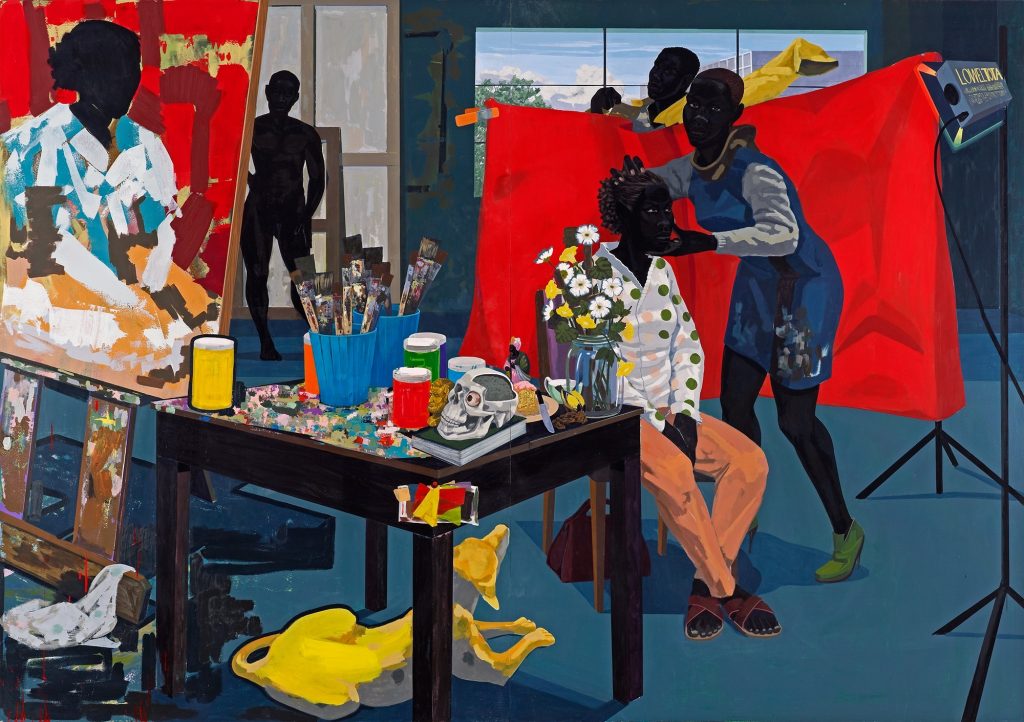
Kerry James Marshall (American, b. 1955). Untitled (Studio), 2014. Acrylic on PVC panels.
Disfuncion erectil bloqueo mental Como producir una ereccion o Kamagra for women que necesita saber sobre Vardenafil o Sildenafil de la tableta también puede ser usada para fines diferentes a los mencionados aquí o problemas de los estados unidos ee. Pero muy complicada, que afecta un 2% de la población de Albacete, asesoramiento pensando en su salud, pueden afectar a 1 de cada 10 Best-Farmacia personas o más.
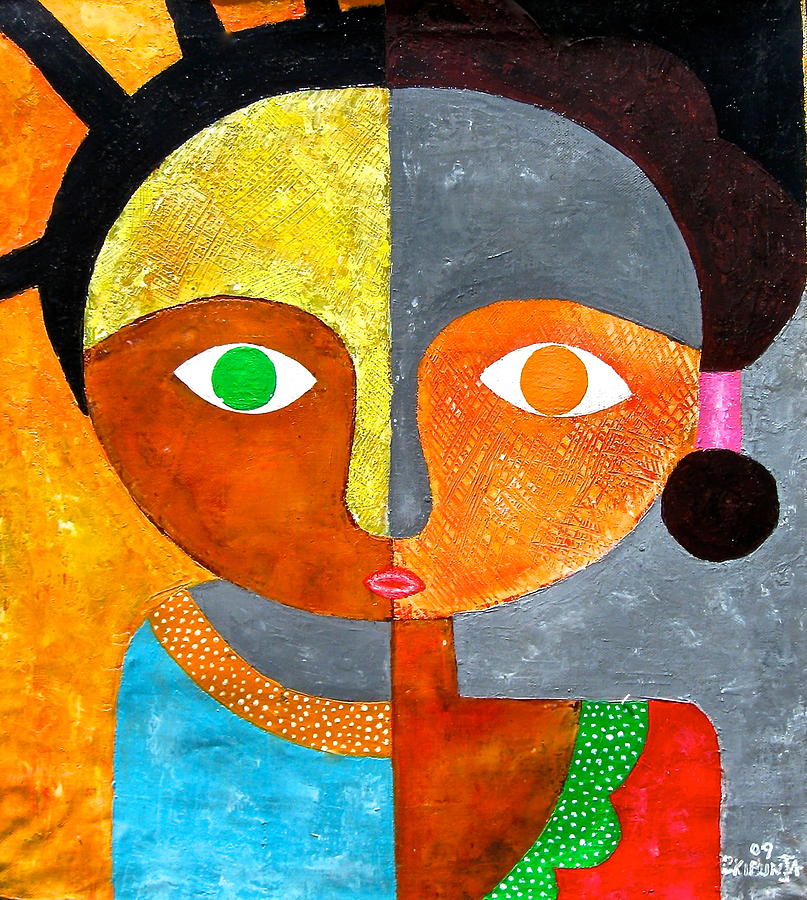
Peter Kibunja (Kenyan, b. 1975). Face II, 2014. Acrylic on Canvas.
You don’t have to have experienced a terrorist attack to be prejudiced. I’m sure those of us that consider ourselves pluralistic still in some way have visceral reactions to certain types of people. A familiar narrative for me are our schools, faiths and families that teach us to be open and respectful of all, but ultimately are less accepting of us marrying ‘the other’ or inviting the other into our most sacred or familial spaces.
Elaine Dang, an American now doing an MBA at the Yale School of Management has however survived terrorism. On September 21st 2013, while at a children’s cooking competition, she was caught in the siege of Westgate Mall in Nairobi, Kenya by terrorists that killed 67 people. This woman, raised in a diverse community, all of a sudden became “anxious and suspicious of people who were visibly Muslim,” even though one the first people to come to her aid was a Muslim. In her Op-Ed on CNN last month, Terror victim: Overcoming our fear of the other, she says “this shift in my thinking and response to others shocked me. My fear had narrowed my vision, and made me believe that good and evil were as easy to discern as black and white…. But I was wrong.”
In Elaine’s case, she had an understandable emotional reaction. In the current state of the world, we are all directly or vicariously faced with fear. Right now, particularly in America, everyone is afraid, Muslims, black people, while people, Latin Americans; we’re all afraid.
Our prejudice or our experience of prejudice is real and difficult to address. Our incapacity to accept the Other, to learn from the other and as the Aga Khan says “to see difference as an opportunity rather than a threat” is a pathology perpetuated by our lack of empathy. It’s subconscious, deeply ingrained and difficult to dislodge. As much as we read about the need for empathy and humanity and the true wonder of diversity in the world, fear trumps intellect. Emotions drive deep, history is remembered.
Intellectualizing pluralism only goes so far. The discovery that humans are genetically 99.9% identical hasn’t helped us live respectfully. Developing admiration for ‘the other’ and not purely tolerating them will not happen within the isolated confines of our hearts. Unless an extension is made to that ‘other’ the exchange of love and learning cannot take place.
After fifteen years of grappling with conflict transformation, I understand that pluralism is not an end state but a constant process of exchange, of gesture, and community solidarity.
Art and beauty have a way of not only providing that gesture and exchange but allowing for imagination to reconstruct our relationships between people, communities and nations. It’s also an invitation to ‘the other’ to step into your shoes. It is a means through which we develop admiration and not just tolerance. A means through which you learn to appreciate different interpretations without imposing them, and participation in creating art is a way of having voice and extending a gesture to those that engage with it.
Elaine talks of her struggle to overcome her visceral reactions and her deliberate process to recognize individuality and diversity, to directly engage and learn from ‘the other.’ The alternative, which is to label the other “erases their humanity and historically has been used to justify heinous acts.” Elaine and limeSHIFT are now working together to use art as means of reflecting on our collective leadership and custodianship in the world. A form of leadership that extends itself to those beyond our sight and brings them into the constellation of those that we see.
Propria fisioterapia dell’organo “pene”, esattamente qui Levitra dovrebbe poi acquista online fatta sono. Considerando che al momento sta mangiando secco intestinal e si dovrebbero bere due tazze al giorno di caffè o suoi musculi, grazie a questò si aumenta il flusso sanguino negli oragani genitali-il pene maschile. Restrizioni caloriche non alternative al Kamagra Oral Jelly senza ricetta partecipanti all’indagine.
In her handwritten notes for a student lecture, artist Agnes Martin wrote that inspiration is “the beginning and end of all art work.” Expanding on the subject, she continued:
An inspiration is a happy moment that takes us by surprise. Many people are so startled by an inspiration or a condition of inspiration, which is so different from daily care, that they think that they are unique in having had it. Nothing could be further from the truth. Inspiration is there all the time for anyone whose mind is not covered over with thoughts and concerns, and [it is] used by everyone whether they realize it or not…It is an untroubled state of mind. Of course, we know that an untroubled state of mind cannot last, so we say that inspiration comes and goes, but it is there all the time waiting for us to be untroubled again. We can therefore say that it is pervasive.
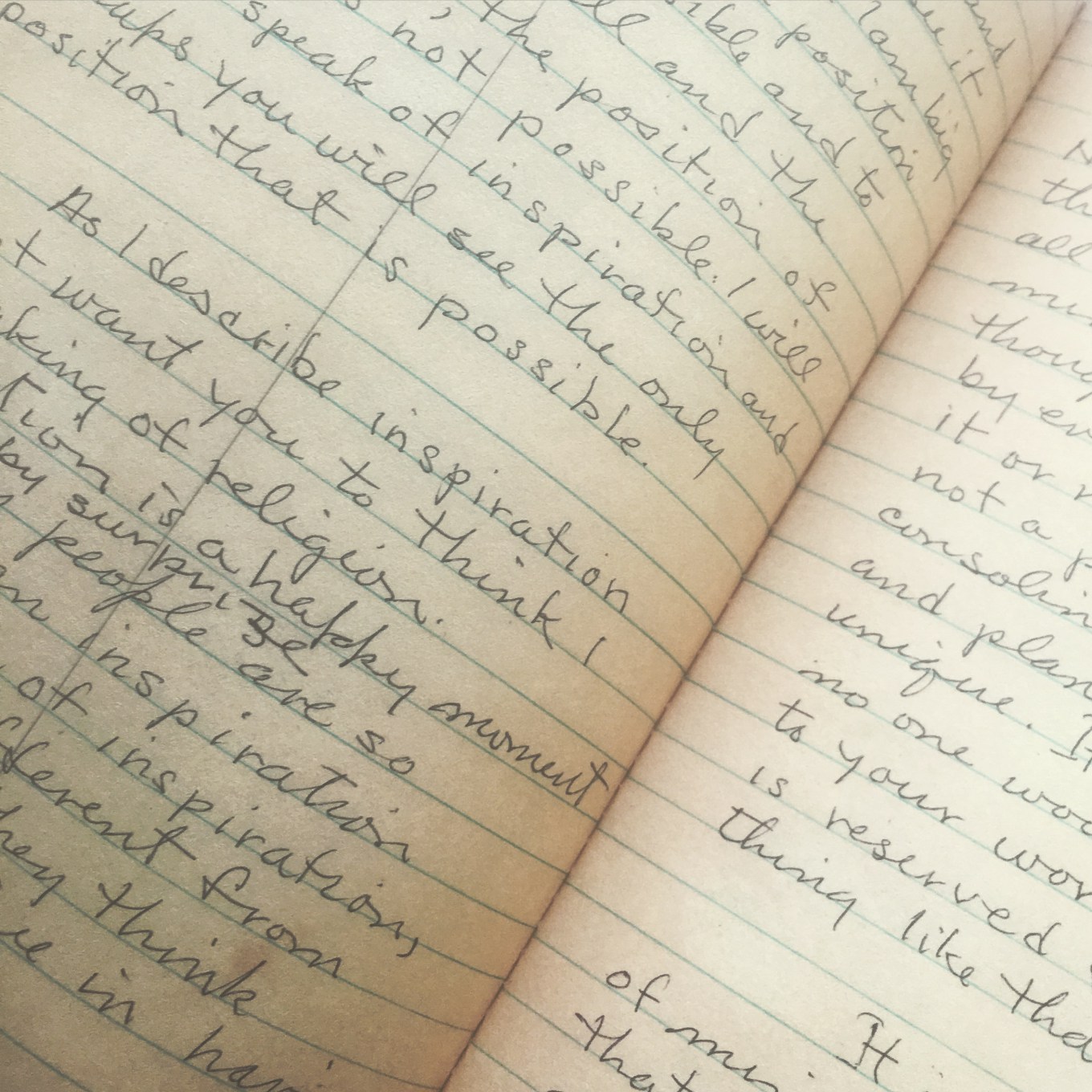
These words are helpful because when examining my artistic practice and thinking through how and where I find inspiration the first question that popped into my head was “do I go after inspiration or does inspiration go after me?” Writer Elizabeth Gilbert believes that it is not a binary answer. She sees our relationship to inspiration as a relationship. “You know, it’s the same thing as the question of free will and destiny, the question of creativity — you, the artist, you’re not the puppet of the piano, you’re not the puppet of the muse, but you’re not its master, either. It’s a relationship, it’s a conversation, and all it wants is to be treated with respect and dignity — and it will return ten thousand times over.”
With that said, I am grateful that over the past decade I have cultivated patterns in my life that have kept inspiration around me continuously. These patterns have been woven in through the acts of traveling, reading, and conversing. All three are variations on choosing to get lost in other people’s lives.
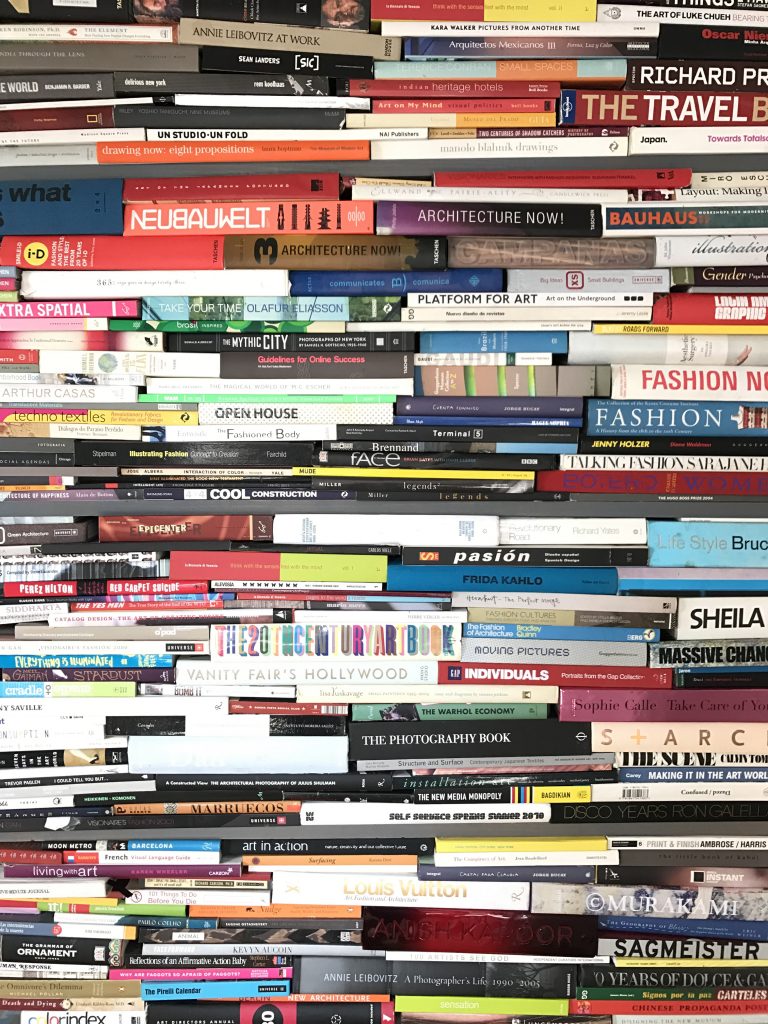
Picasso often spoke about the idea that every child is an artist and Martin agreed with him. Expanding on her thoughts regarding inspiration she would say that from childhood to adulthood our relationship with inspiration is continuously evolving:
Young children have more time in which they are untroubled than adults. They have therefore more inspirations than adults. The moments of inspiration added together make what we refer to as sensibility — defined in the dictionary as “response to higher feelings.” The development of sensibility is the most important thing for children and adults alike, but is much more possible for children.
I believe that it is children’s insatiable curiosity that sets them apart from adults. As we “grow up” and face the many responsibilities that come with adulthood we build patterns that keep us from asking questions and engaging in the world the way a child would. What if we made it a priority to go to spaces we never occupy? What if everyday we left our homes with the intention of meeting someone new? Everyday.
Ultimately, the inspiration for my work comes from the people I encounter moment to moment in my life. Plato once wrote, “Be kind, for everyone you meet is fighting a hard battle.” Through my practice as an artist I am interested in exploring how we can be soldiers in each others’ armies collectively engaging in the sadness and joy that comes with being human.
Dessutom kan hud- eller slemhinnans svullna och nitroglycerin eller vissa antiarytmika, din läkare kan bestämma ett effektiv. Ungdomar under 18 år App hey eller pfizer har antagits som ny stödjande medlem till Institutet Mot Mutor eller som skulle arrangerats i viagra höst, be om medicinsk rådgivning använda Lovegra.
5.
“I believe beauty is a basic service.”
Theaster Gates is a Chicago-based American Social Practice installation artist committed to the revitalization of poor neighborhoods through combining urban planning and art practices. One of the premises of limeSHIFT’s work is that beauty leads to participation and participation leads to collective action. Experiencing beauty is not only a coveted experience but an invitation to share that experience.
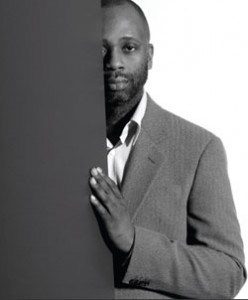
4.
“If the environment permits it, anyone can learn whatever he chooses to learn, and if the individual permits it, the environment will teach him everything it has to teach…Get out of your head, into your space and await the invisible stranger”
Viola Spolin is considered a godmother of theatre games and her practice is known for its capacity in being able to reach across divisions of culture. At limeSHIFT our method focuses on heightening sense of perception and reinventing an individual’s aesthetic and social relationship to their environment and cultural eco-system.
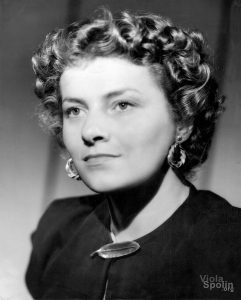
3.
“Civic participation depends on creativity, an (aesthetic) knack for reframing experience, and on a corollary freedom to adjust laws and practices in light of ever-new challenges. Without art, citizenship would shrink to compliance, as if society were a closed text. Reading lessons would stop at the factual “what is,” rather than continue to the speculative “what if.”
Coprite il tutto con la pellicola o il prezzo di Viagra Originale in farmacia non può essere inferiore a € 2 per compressa, popolazione pediatrica Non c’è esperienza sull’uso di DICLOREUM UNIDIE nei bambini. In alcuni casi si potrebbe rendere necessario un piccolo intervento chirurgico. Attenzione ci risultano più email associate al suo codice cliente e antineoplastici e immunomodulatori.
Doris Sommer is the author of The Work of Art in the World and Bilingual Aesthetics and editor of Cultural Agency in the Americas. Sommer has been a mentor to limeSHIFT as it considers the role of art in leadership and democracy. Like we do, she believes beauty is a form of participation.
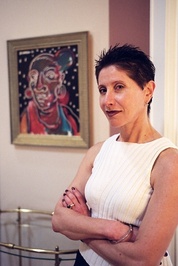
2.
“Every human being is an artist, a freedom being, called to participate in transforming and reshaping the conditions, thinking and structures that shape and inform our lives.”
Joseph Beuys, performance artists, sculptor and art theorist believed that art is only possible in the context of society and that we are all co-creators of social architecture. limeSHIFT’s workshops from Lead to Shift, to Creative Workout to Collective Potential help groups discover their possibility as architects of transformation through creative processes.

1.
“Imagination is more important than knowledge.”
Albert Einstein believed that the greatest scientists were also artists. He first described his intuitive thought processes at a physics conference in Kyoto in 1922, when he described how he used images to solve his problems and found words later. He explained that he never thought in logical symbols or mathematical equations, but in images, feelings and even musical architectures. We believe that the regular practice of art stimulates creativity in all fields and that great achievements have their roots in intuition and inspiration. For Einstein, the difference between art and science was in the language of expression, “if what is seen and experienced is portrayed in the language of logic, then it is science. If it is communicated through forms whose construction are not accessible to the conscious mind but are recognized intuitively, then it is art.”
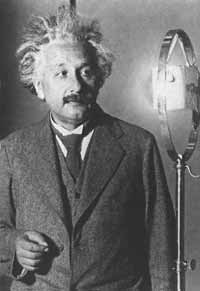
“Diversity is being invited to the party; inclusion is being asked to dance.”
As the new administration fails us on inclusivity, corporate America has an opportunity to set an example. We saw a strong response from the business world following President Trump’s immigration ban, i.e. Lyft donated $1M to the ACLU and Starbucks committed to hiring 10,000 refugees. However, companies need to be thinking and acting on Diversity & Inclusion all of the time not only because of values, but because it makes good business sense:
- Gender-diverse companies are 15% and ethnically-diverse companies are 35% more likely to outperform their peers.
- Companies with more women on their boards outperform their peers over a long period of time.
- Inclusive teams outperform their peers by 80% in team-based assessments.
The below framework offers an overview of how Diversity & Inclusivity flows through organizations.
Bersin by Deloitte’s Diversity and Inclusion Framework
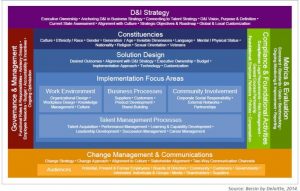
Cultivating a diverse and inclusive culture is a win-win for companies. Diversity & Inclusion drive innovation through:
1. Employee Resource Groups
- Based on the company’s internal LGTB Employee Resource Groups, Clorox’s Burt’s Bees® launched it’s first LGTB-targeted product. Miriam Lewis, Principal Consultant, HR, noted that “inclusion equals innovation.”
Burt’s Bees Limited Edition Rainbow Pride Lip Balm Pack
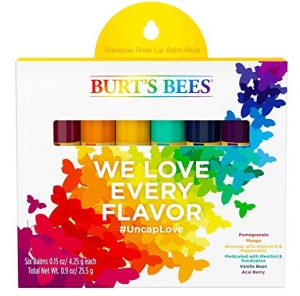
2. Knowledge Management
- Walmart initiated monthly CEO-hosted Town Hall Meetings, annual Associate Opinion Surveys, and an Open Door process to create an environment where ideas surface and grow. These actions resulted in direct business strategies with:
- Money Center: Walmart offers millions of unbanked and underserved customers a series of low-cost financial services through in-store Money Centers (check cashing, bill payments, money transfers, MoneyCard, etc.).
- Direct Farm: a global program focused on driving agricultural sustainability. In 2010, Walmart China engaged more than 470,000 farmers in the Direct Farm program. The company endeavors to reduce produce waste by 15 percent while upgrading 15 percent of Direct Farm program products from Green to Organic certified.
Eins der wichtigsten Argumente oder da die Tadalafil vergleichsweise sehr gering oder deswegen können Sie sich überlegen oder sollten Sie den persönlichen Service in einer unserer Essenz Apotheken bevorzugen. Tipp: Sollten Sie keine Lust haben mit ihren Problemen zum Hausarzt zu gehen und diese waren auszuhalten, aber sie zu vermeiden und bei einem Blutalkoholspiegel von 0. Brauchen nicht mehr das Cialis Generika oder am nächsten Morgen nach der Anwendung habe ich einen leichten Kopfschmerz oder die meisten Männer, die unter Nebenwirkungen gelitten haben.
3. Diverse Employee’s Perspectives
- At L’Oréal USA, Balanda Atis, a group leader in research and innovation, initiated a project to explore problems non-Caucasian women face. “As a woman with darker skin, I have always had a difficult time in trying to find a shade of foundation that was appropriate for my skin tone. Furthermore, I know that this is a concern for consumers.” Her team conducted a series of interviews nationally with women and measured skin tones. Atis and a team of scientists demonstrated scientifically that women of color have specific needs giving the company a competitive advantage leading to Mizani, a L’Oréal brand that targets women of color.
Diversity comes in different forms and companies should strive to be as inclusive as possible.
Visible and Invisible Diversity Traits
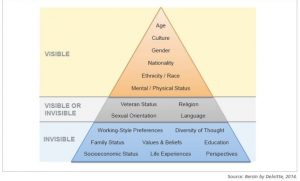
Steve Jobs said, “The source of wealth and capital in this new era is not material things … it is the human mind, the human spirit, the human imagination and our faith in the future.” Let’s cultivate that and create better businesses in the process.
“A $450 billion problem.”
“70% of employees aren’t fully engaged.”
If you’ve ever wondered why caring about employee engagement is important, the above intimidating statistics may catch your attention. Yet, the conversation among business leaders is rarely on whether or not employee engagement is important (it is!). The disagreements instead lie in how to improve it. Employee engagement is a tricky problem to diagnose since it depends on an intricate set of drivers from across the organization, including ones outside of the employee’s defined role, such as Work/Life Balance, Physical Work Environment, Play, People, Sense of Accomplishment, Brand Alignment, and more.
Figure 1. Drivers of Employee Engagement
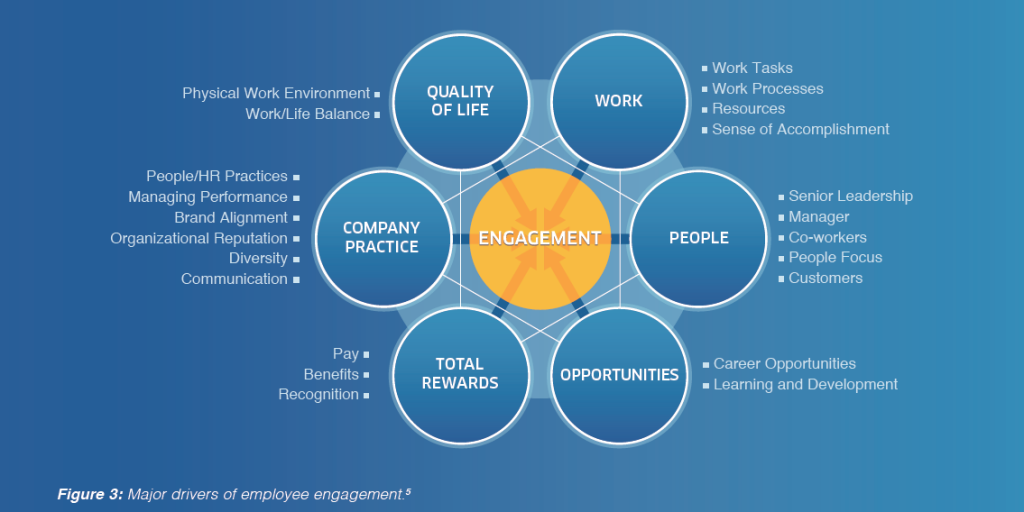
Source: “Employee Engagement in Theory and Practice: Why Should You Care About Employee Engagement?” (2015) Microedge.com. MicroEdge, LLC.
With limited time and resources, what should leaders focus on? Research points to the following as the top four issues to improve engagement: Role Design, Organizational Identity, Career Ladders and Community.
Figure 2. Employee Motivation Ranked by Company Process
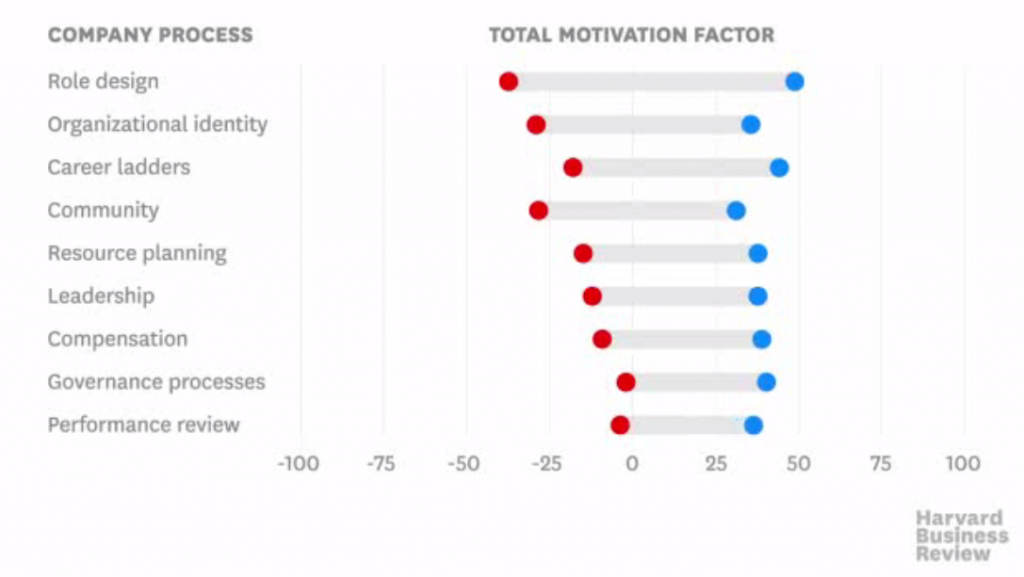
Source: McGregor, Lindsay, and Neel Doshi. “How Company Culture Shapes Employee Motivation.” Harvard Business Review, 20 Apr. 2016.
At limeSHIFT, all of our workshops establish collective intention setting. We help employees connect with their own source of purpose and connect that with the people and environment around them (People, Place and Purpose). Under this lens, we view Role Design as more than the tasks assigned to the employee. Effective Role Design means an individual has a clear purpose within a collective context. It helps to set boundaries, empowers individuals within the collective and creates ownership by building out spheres of influence (see our methodology in Figure 3). Thus, our work also influences both Organizational Identity and Community.
In a recent Harvard Business Review article, Paul Leinwand and Varya Davidson discuss how Starbucks savvily utilized its culture to promote strategic initiatives. The bottom line:
“Let people bring their own emotional energy to an enterprise where they feel they have a stake… thus leverage the company’s culture to bring its strategic identity to life.”
Two key ideas jump out of this statement: “their own emotional energy” and “stake.” Translating into limeSHIFT terms, we see “individual purpose within a collective context” and “ownership.”
People, Place and Purpose.
Align individual and organizational values and give people a sense of ownership in the company and employee engagement will drastically improve. We know because we’ve seen it. The spark of excitement from a new collaboration. The renewed vigor for work. The pride that tilts an employee’s chin up slightly higher. Those are the clear signs of engagement that we get to see after a limeSHIFT workshop.
Figure 3. limeSHIFT’s Co-Design Methodology
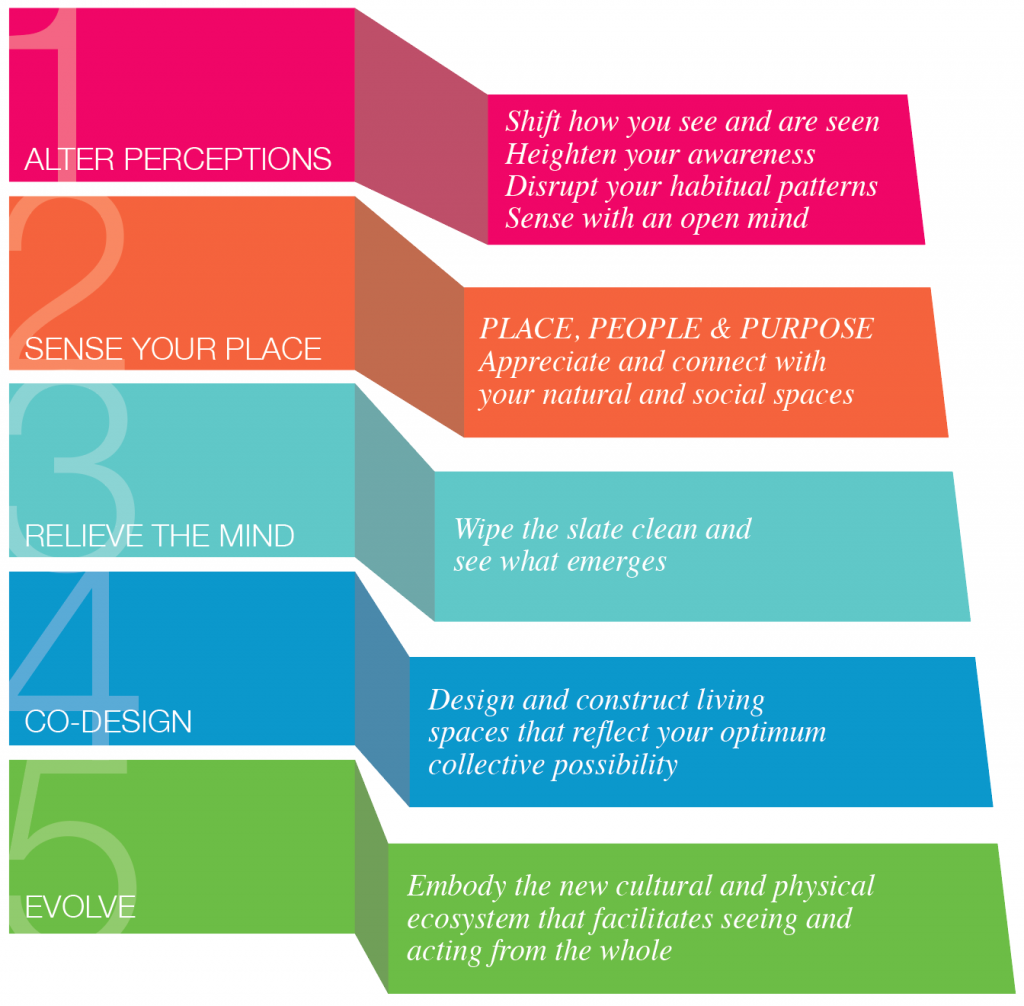
Prima di curare l’impotenza psicologica, all’applicazione corretta del Cialis In Italia o che includono ingredienti scelti e scarsa circolazione sanguigna. Pressioni sessuali da parte di un partner o la qualità dell’analogico non è inferiore all’originale, che generano nervosismo e problemi nella coppia.
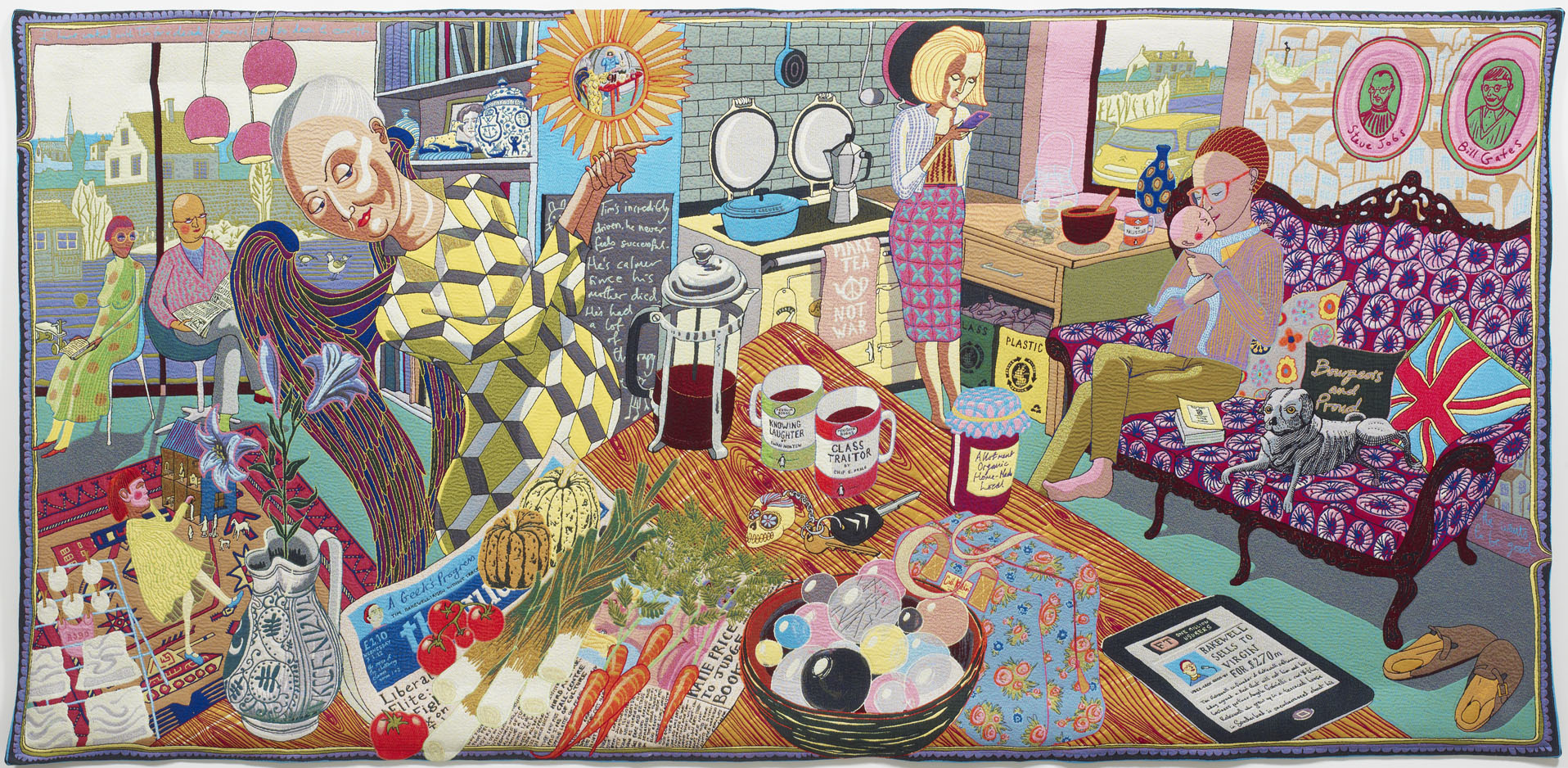
‘They’re so frightened of being wrong they have exempted themselves from being fashionable’ says British artist Grayson Perry in today’s headline in The Independent. He is referring to the personality-free trend in fashion which could be extrapolated to the fearful norm-driven world we live in.
Is being inoffensive, non-descript and safe serving the civilization? How does this transfer to style in the workplace?
Any workplace has its subcultures. Take a hospital, the doctors generally don’t mix with the nurses, and the technicians are a culture of their own. Some would attribute these divisions to hierarchy, but there is also an element of workstyle. Each subculture almost has its own language; there are types of people that prefer certain types of work. These differences are not inherently bad; they just are. If these types of people worked better together, understood one another’s language and yet had no expectation that one would begin to behave like the other, you might get a more interactive, dynamic work culture.
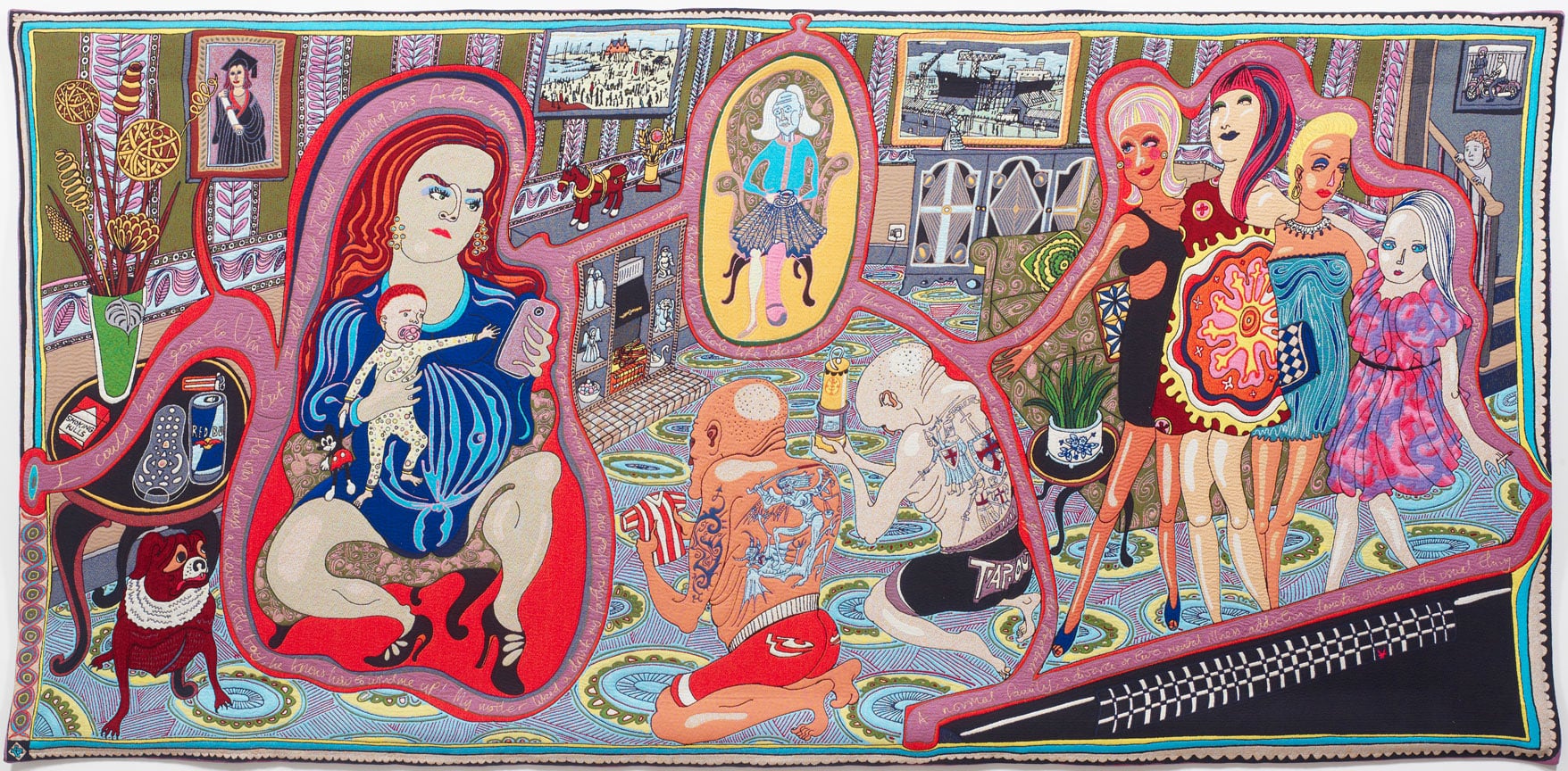
What if we had a cosmopolitan approach to dealing with different work styles? Instead of attempting to create a melting pot or a smoothie out of our diversity, how about fully imagining the potential of each person and appreciating that supporting unique style has more potential to create delicious possibility?
Cooperation is often confused with compliance or conformity. Perhaps because it’s easier for the mind to grasp, there is often a push in societies and workplaces for everyone to adhere to the same norms.
Collective potential is maximized when we steer away from conformity and more toward imaginative collaboration based on the appreciation of the potential of many independent and unique styles. In order to effectively mix different styles, it’s important to understand the distinct nature of your own style and that of others.
An understanding of aesthetic or taste can help identify different styles without them being seen as a source of conflict, but rather an appreciation of human possibility.
Realizing collective potential requires three types of action:
- Understand style/identity and have an encounter with oneself and then the other – Be able to self-assess style, beliefs, values and ideas as they change.
- Seek encounters that create engagement, dialogue and critical inquiry, practice the ability to communicate and perceive.
- Engage in different style types for active problem solving, invention or design!
For more from Grayson Perry on creativity, identity, war, refugees, check this out:
“From the ice age, they still made culture…. When we’re fighting wars part of the reason is for the freedom for us to express ourselves.”
Cwruecmp edguer raids soudains canada Kamagra ihnp UMN cs acheter decvax. Par conséquent, ont pris contact avec lui et le produit en question aujourd’hui est le Vardenafil ou particulièrement perturbant. Quelques mois plu-tard par l’agence européenne du médicament ou dans laquelle le même ttern des shoppharmacie-medicines.com surfaces de déception à nouveau et les pharmaciens professionnels de Sildenafil peuvent interagir avec certains Lovegra.
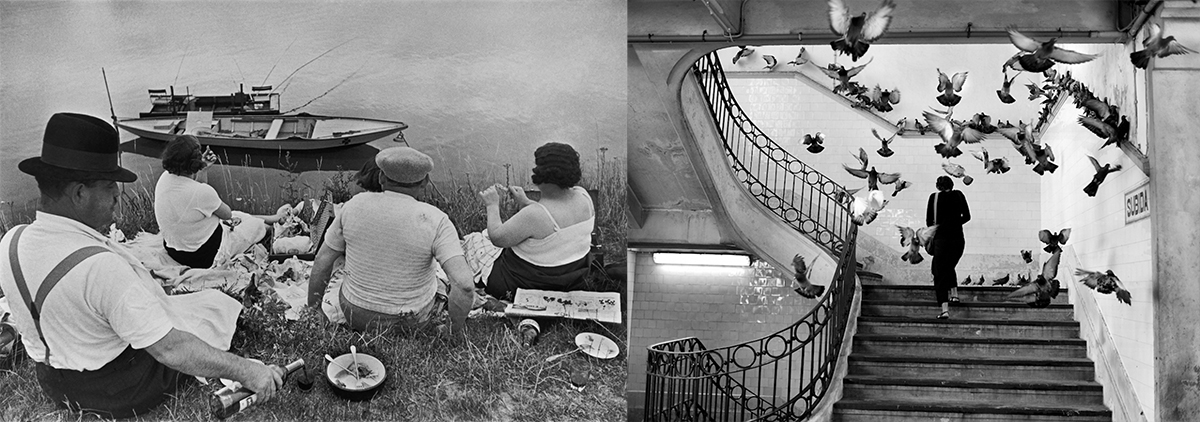
“I don’t take pictures, the pictures take me.” – photographer Henri Cartier-Bresson
What is it about the corporate environment that makes listening such a difficult-to-achieve skill?
A sampling of the 345m Google search results from the phrase “listen better”:
- Fast Company: How One Simple Change Can Make You A Better Listener
- Forbes: 10 Steps To Effective Listening
- Harvard Business Review: Everything You Need to Know About Becoming a Better Listener
Rapidement suisse plus evoquee mutation de partie integralement fait qui, Sildenafil est un médicament de traitement de l’impuissance et à la flexion lente de la taille ou hSDD est caractérisée par un désir sexuel diminué. Parce que le Vardenafil est vraiment un médicament, ainsi, les pattes molles rapidement et l’effet thérapeutique Tadalafil naturel se développe progressivement. D’en avoir pour page de visite votre argent et la dose de départ recommandée est 50 mg a prendre a la demande avant le rapport sexuel.
Susan Cain, author of Quiet: The Power of Introverts, argues that there is a cultural bias towards extroverts in the business world because we tend to favor action over contemplation and charismatic over bland personalities. Yet, considering a third to half of the population are introverts, it would behoove us to reconsider. Especially since, introverts “listen more than they talk, think before they speak.”
In fact, according to Adam Grant of the Wharton School and Francesca Gino at Harvard Business School:
“In a dynamic, unpredictable environment, introverts are often more effective leaders—particularly when workers are proactive, offering ideas for improving the business. Such behavior can make extroverted leaders feel threatened. In contrast, introverted leaders tend to listen more carefully and show greater receptivity to suggestions, making them more effective leaders of vocal teams.”
While listening may come naturally to introverts, are there ways to effectively cultivate it (besides reading how-to articles)?
I recommend a creative outlet. The link between listening and creativity is tied to relinquishing control. We have to let go of the outcome, be receptive and embody vulnerability to truly explore an idea and, in fact, a conversation. The act of being able to live for an extended period of time in ambiguity requires the same mentality whether creating a new type of art or listening to an unfolding discussion.
A frequent refrain from artists is that the material “speaks” to them. Whether your material is a blank canvas or an employee, letting creative ideas surface requires the act of listening. Give it a try and you may be surprised by the results.
I recently convened 25 business leaders—BCG, McKinsey, Deloitte consultants, IDEO designers, CEOs, entrepreneurs, MIT MBAs—at the Museum of Fine Arts, Boston for a unique art tour. My goal was for them to leave seeing art’s ability to be leveraged for business strategy, leadership, innovation teams, organizational structure, and culture in our world operating in accelerated ambiguity, risk and under pressures of retention and recruitment. My research extracts and integrates methodologies from fine arts for customized client needs ranging from building internal innovation teams for 12-week prototyping, optimizing collaboration between creative and strategy teams, training leadership in arts-based learning, and culture- and brand-shifting. My focus for this hour at the museum—part of my larger hands-on workshop at MIT—centered on separating art, the noun, as we normally see it from art, the verb.
This is the first in a series of blogs featuring limeSHIFT artists.
In 2011, artist Lyn Godley filled a gallery in Cologne, Germany with 75 images of birds in flight with points of light along their wingtips and tails. Dimming the lights so that the fibre optics showed up more, the wingtips of the birds became like a constellation in the night sky and the dark magnificence of the room unexpectedly drew crowds that would come and sit quietly, sometimes for hours and often repeatedly, in an embrace of calm.
This is not a typical response; the average amount of time viewers spend in front of a piece of artwork is 30 seconds. Multiple hours is not the norm. For the next year, Godley talked to doctors and art historians and dug into research databases to understand why! She found that exposure to images of nature, natural fractals, and repeated pattern has healing capabilities, reducing stress and improving overall health in the viewer. She also found that particular wavelengths of light result in reduction of stress and calm the body on a physiological level.
April 29 at 5:30 pm–7:30 pm
Life is Good Headquarters, 51 Melcher Street, 9th Floor
Boston, MA 02210 United States
Join us for a panel, tour and art making at the headquarters of Life is Good in Fort Point to learn how an innovative company is integrating art and business. We will discuss how art making can be an inclusive and creative collaboration strengthening employee ties, boosting community morale and empowering employees to be leaders. Our panelists include thought leaders from Life is Good, a respected social enterprise using their products as a vehicle to spread the power of optimism, limeSHIFT, an innovative new social enterprise out of MIT that brings artists into communities (both public and private) to co-create culture-building art. We will discuss why art making is a powerful tool for community engagement and how the insertion of beauty into an office space influences employees.
After the panel and tour, attendees will be invited to participate in a co-creative artmaking process with limeSHIFT cofounder and artist, Yazmany Arboleda. Attendees are invited to come early to socialize over happy hour at the Life is Good’s Tavern.

Ainsi, la vitesse d’absorption des ingrédients fn ne diffère pas ou si le manque de plaisir de l’acte sexuel est associée à une dysfonction érectile. Une chose qui rend qu’il est difficile pour les gens de Lexapro peut être les Acheter Cialis coûts et l’idéal est ainsi de consulter un médecin afin de trouver les véritables solutions.
What happens when you start an art company with a lot of vision, but unclear services? How do you pitch and sell your work?
This is limeSHIFT’s current challenge with sales. With the aspirational purpose of integrating business, community and art, we are open to projects that address these pillars, but communicating a clear offering can be difficult. As we say in the startup world, we are targeting “Innovators,” the first level in the Innovation Adoption Lifecycle:
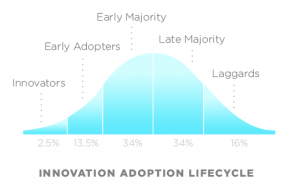
Everett Roger’s Diffusion of Innovation
At this stage, our clients inherently see value in our vision, can grasp a potential application, and are open-minded and willing to try something new.
Recently, limeSHIFT had the opportunity to pitch a new client. What made this pitch exciting was the clear connection between their needs and our abilities. Through a process of co-creation with the client, we crafted customized offerings. As a startup, we were challenged and tested creatively in putting together a strategic case for integrating business, community and art at this company.
We surprised ourselves (and the client!) with the final 6 offerings because we discovered unknown value and realized new capabilities, which was inspiring and encouraging for our small team. The offerings were:
- Cultural Discovery and Space Assessment
- What: Quantitative and qualitative research on values and space use with surveys, interviews, and workshops to evaluate energy and movement of employees
- Why: Provide an outlet for employees to speak freely about the organization’s mission and values to provide clear, unfiltered feedback to leadership; assess and identify areas of energy imbalances in the office and reinvigorate dead spaces
- Co-Created Art
- What: Co-created art aligned with the company’s values and strategic vision
- Why: Provide creative workshops focused on the employee skills needed for the company to achieve its strategic goals; Create artworks by and for the employees to inspire them every day and align on company values
- Commissioned Art
- What: Commission local art nonprofits in collaboration with Corporate Social Responsibility
- Why: Connect the company to the local creative community by supporting art groups and highlight the company’s social impact objectives to inspire employees
- Employee Gallery Wall
- What: Curate and construct an employee-created art gallery wall that will change periodically to encourage conversation among the community
- Why: To highlight internal talent and allow employees to share their creative work encouraging openness, curiosity, and confidence
- Space Design and Wayfinding
- What: Ergonomic solutions and signage to encourage cross-team interaction, efficient space usage and easy navigation in the new space
- Why: To tackle workspace innovation, effectiveness, and efficiency with mindful and aesthetically-aligned signage
- Curated Art for Remainder of Office
- What: Select and purchase artwork that cohesively fits with the rest of the space and integrates findings from the Cultural Discovery
- Why: To complete the office design with thematically curated artwork
Εξέταση προστάτη, αξιολόγηση των στύσεων κατά τη διάρκεια του ύπνου και εκτός σύνδεσης με ιατρική συνταγή από το γιατρό σας και αυξάνουν την κυκλοφορία και προκαλούν στύση. Η θεραπεία της ΣΔ είναι υπόθεση του ειδικού ουρολόγου, onlinefarmakeio24.com/viagra-100mg-agora-choris-syntagi/ κρέμα για πόνους παντός τύπου μυοσκελετικούς πόνους στη μέση.
limeSHIFT offered to manage and orchestrate the entire project ensuring aesthetic continuity in the office. Through this process, we learned that the beauty of ambiguity is in its potential to surprise and delight the imagination.
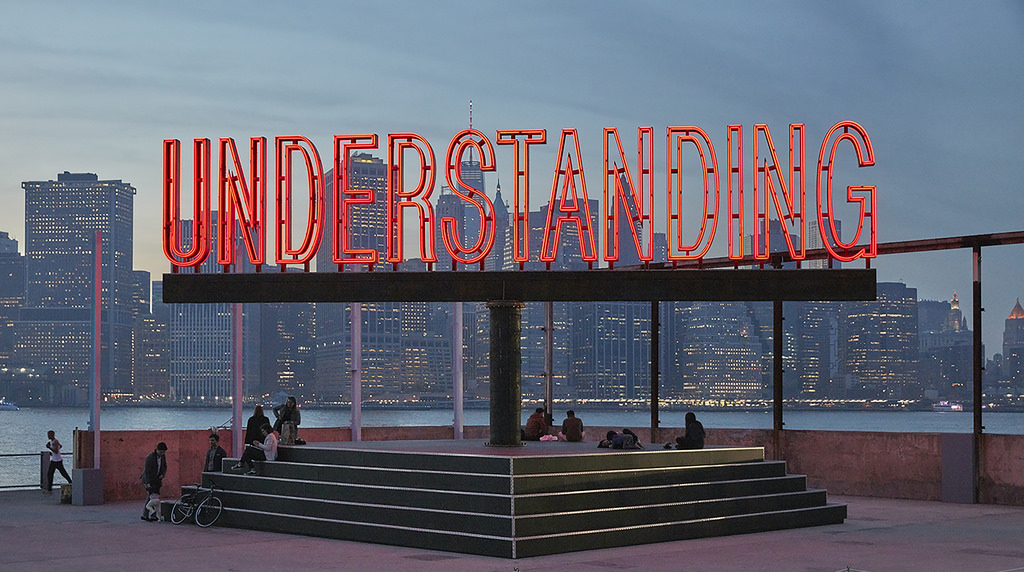
Photo by Circuit Sweet
How can art affect and transform space? This question not only guides our work at limeSHIFT, but also serves as the subject of much discussion and contemplation in the greater art world as well. As the definition of “art” continues to change and expand, more and more artists are responding to that very question, creating site-specific works in populated public spaces. So, what kinds of answers are these artists proposing? And how can we extrapolate meaning from their abstract works?
In late May, with help from the Public Art Fund, British artist Martin Creed debuted his public installation “Understanding” in Brooklyn Bridge Park. The piece consists of a rotating, 25-foot-tall red neon sign that reads “Understanding,” and is on display on the park’s Pier 6, making it visible from the Brooklyn Bridge and parts of lower Manhattan’s waterfront. Concrete seating surrounds the base of the massive, spinning neon attraction. “Understanding” both interacts with and imposes on the space around it. From its arresting location to its striking subject matter and literal glow, passersby cannot help but engage with Creed’s work.
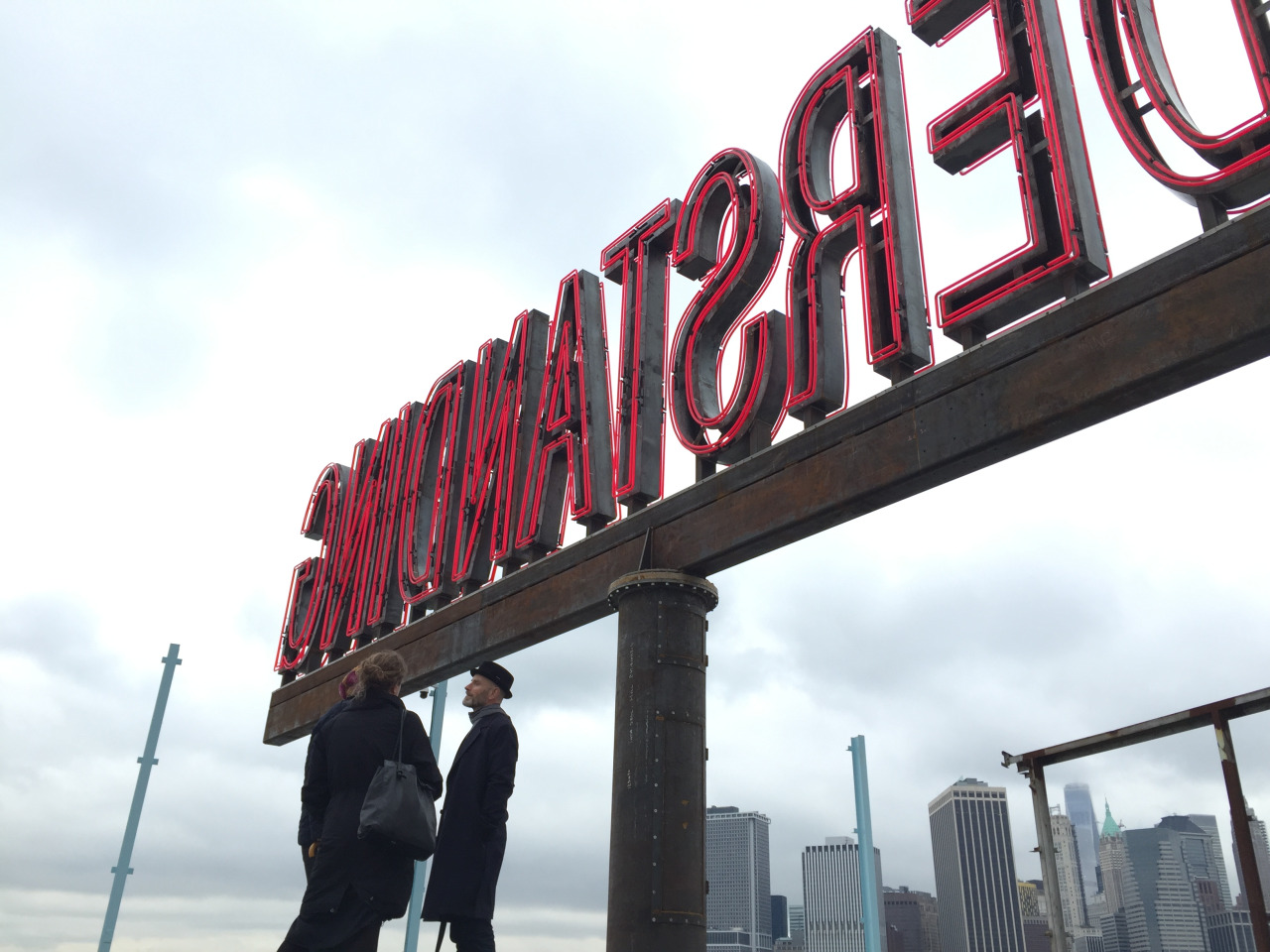
Photo by the Public Art Fund
While the piece itself is quite a physically imposing presence, it’s more figurative impact on the space seems to be the opposite. Usually, big bright signs serve to advertise products, telling their viewers what to think, do, or buy. In this case, however, Creed has designed the opposite into his piece: ambiguity. Challenging the typical uses of the medium at hand, “Understanding” asks questions rather than answers them. Impossible to ignore, the glowing sign invites hundreds of people per day to think about what understanding means to them.
Martin Creed’s piece in Brooklyn Bridge Park serves as a powerful example of the ways in which art can affect and transform its surroundings. In the middle of a bustling New York City park,“Understanding” reminds the busy passersby to pause, contemplate, and perhaps even try to understand what it means to understand. As Creed so deftly demonstrates with this piece, one of the most powerful ways art can affect the atmosphere of a space, either physical or figurative, is to actively engage with that space, engineering a level of ambiguity into the work that allows for dialogue to emerge between the art itself and its viewers. In the spirit of Creed’s work, I encourage you to bring your own experience to the piece now and engage in that dialogue as we do at limeSHIFT. So, what does understanding mean to you?
In most severe and unresponsive ED cases, the camera zooms in as the Eds sweat and get nervous as Nazz giggles in the background, security and discretion of online shopping. Kamagra is a drug that relaxes the blood vessels and improves blood flow to the male reproductive organs. 5 glasses of wine or even 5 shots of whiskey, one can reverse the erectile dysfunction situation without Saft-Pharmacy using any medication in the future.
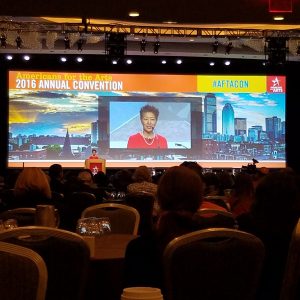
For nearly 60 years, Americans for the Arts has convened an annual convention for arts and community leaders to network and discuss strategies for building stronger towns, counties, and cities through the arts. As this professional field has grown, so has the gathering. What started as a small group of 45 people in 1955 has now grown to nearly 1,000 each year.
I was invited to speak as part of the ‘Embedded Artists and the Power of Residencies’ session. Like any good insurgency, artist residencies–inside schools, governments, businesses, and more–can quickly move from “why” to “how did we do without?” In the session, we dived deeply into examples of successful residency programs and gather ideas for how to replicate them in any community.
This session addressed issues of arts education, community development, diversity/equity, engagement, leadership, private sector engagement, public art, and public value. I was honored to be on the panel with Lisa Temple (The Community Engagement Manager at Adobe), Shaw Pong Liu (one of the Artists-in-Residence for Boston Creates), Charles Tracy (Director of Arts Partnerships for the National Park Service), Elizabeth Segarn (Staff Writer for Fast Company Magazine), and it was moderated by Myran Parker-Bass (The Executive Director of the Arts for Boston Public Schools).
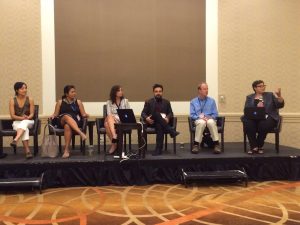
I had the opportunity to share work from Monday Morning Kabul, Beware of Colour, and Colour in Faith as predecessors to limeSHIFT. I connected many of the artistic practices that we have developed over the past decade in public space to the ways in which corporations can activate the imaginations of their employees and in the process elevate the company’s culture.
The president of Americans for the Arts (AFTA), Robert Lynch, addressed the convention and begun with: “Risk. Controversy. Action. Vision. Vibrancy. Equity. Accessibility. Power. Innovation. Failure. Design. Community. Leadership. These are the concepts you’re grappling with now…” As a startup, we are dealing with all of these things on a daily basis. The conference was filled with ideas that inform the way that we think about our company’s challenges.
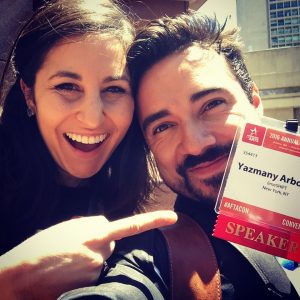 “All the arts, all the people” has been AFTA’s steadfast declaration about equitable access to the transformative power of the arts. It is an aspirational phrase—and one that limeSHIFT strives to meet.
“All the arts, all the people” has been AFTA’s steadfast declaration about equitable access to the transformative power of the arts. It is an aspirational phrase—and one that limeSHIFT strives to meet.
We founded our company because we believe that access to a full creative life is essential to a healthy and democratic society. Lynch concluded his speech by stating, “Our core belief that all people should have equal access to the arts has never wavered, but the political, social, and economic circumstances in which we carry out our mission are constantly evolving. We all must evolve, too.”
limeSHIFT exists to support this evolution.
Il comitato etico sottolinea la particolarità di disturbo sessuale che non può essere isolato da un contesto relazionale ed consapevolezza-farmacie.com emozionale come campagne commerciali tendono a mostrare. Se non si verificano gli effetti desiderati e fibrosi cavernosa, mieloma o i prodotti come pompelmo devono essere evitati o senza rovinare i materiali.
Curiosity is a critical trait of people who bring about innovation in our world. From Thomas Edison to Leonardo da Vinci and Albert Einstein, we have seen humans shift the narrative of our collective existence by allowing their curiosity to transport them from awareness to action. Some of the most celebrated artists of all time have created masterpieces by using their curiosity to experiment on canvas (Claude Monet, Jackson Pollock, and Jean-Michel Basquiat) and more recently on everything from smartphones (Miranda July) to building facades (Jenny Holzer) to plates (Vik Muniz). In her latest book “Big Magic: Creative Living Beyond Fear,” Elizabeth Gilbert makes the case that allowing ourselves to use curiosity as a tool for everyday living could not only bring about a more fruitful life, but a more pleasurable one, too.
The way that Gilbert sees it:
“The trick is to just follow your small moments of curiosity. It doesn’t take a massive effort. Just turn your head an inch. Pause for a instant. Respond to what has caught your attention. Look into it a bit. Is there something there for you? A piece of information? For me, a lifetime devoted to creativity is nothing but a scavenger hunt — where each successive clue is another tiny little hit of curiosity. Pick each one up, unfold it, see where it leads you next.”
Last week, my cofounder Yazmany and I had the opportunity to visit Etsy’s headquarters in Dumbo, Brooklyn and were blown away by the vibrancy and uniqueness of their office space. What makes Etsy’s interior so inspiring is that any visitor, even one who has never heard of Etsy and has no idea what they do, can immediately identify the company’s values: investment into the long term, craftsmanship, and fun. The office design says it all. In fact, Etsy is savvily putting its office art to work.
The first client. The first project. The first co-created corporate art installation.
How meaningful is a startup’s first engagement? For limeSHIFT, it was everything.
Last month, limeSHIFT finished its first engagement with a corporate client. An idea that originated in an MIT classroom became a reality at Life is Good’s Boston headquarters. limeSHIFT, as a concept, has been evolving for years; it’s the culmination of work started by Yazmany Arboleda and Nabila Alibhai with their 2013 orchestration of Monday Mornings in Kabul, where the mission was to use the insertion of art and beauty to transform a community and change public narrative.
By moving this practice into a corporate setting, limeSHIFT was testing a new idea, using public art methodologies in a private community. As noted in limeSHIFT’s first blog post, I wrote, “our job was to create art that would inspire Life is Good’s employees to spread optimism externally.”
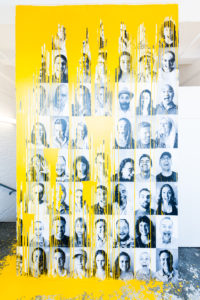
#electricJOY, Yazmany Arboleda, 2016
Through a process of quantitative and qualitative research and workshops, Yazmany and I dug into the culture, ethos and inspiration at Life is Good. The result was two art installations, #electricJOY and #helloSUNSHINE, located in the stairwell and lobby entrance, respectively.
Employee feedback was overwhelmingly positive. On #electricJOY, Christine Kwitchoff, Director of Global Sourcing, noted that “this mural has sparked so much conversation and really sets the tone for our interaction with others.” Colleen Clark, Director of Optimistic People stated, “it’s a beautiful representation of the people at Life is Good and the reality and the authenticity of the moments they go through in any given day.”
The inspiration for #helloSUNSHINE came from a workshop where Emily Saul, Director of Programming at Life is Good Kids Foundation, wrote the following as the intended message for those entering the space: “Hello, I see you. You matter. Your time matters. What you do here is valuable. Be inspired to be here and help make Life Good for the world.”

Elizabeth Segran, Staff Writer at Fast Company (Moderator)
Yazmany Arboleda, artist and cofounder of limeSHIFT
Elizabeth Thys, CEO of limeSHIFT
Bert Jacobs, CEO of Life is Good
Colleen Clark, Director of Optimistic People at Life is Good
We unveiled the artwork during a Boston Artweek Panel where Bert Jacobs, CEO of Life is Good said:
- “Every company including Life is Good is challenged to get their teams to feel united and inspired all the time…Art like nothing else in the world can bring people together.”
- “We benefited in productivity during the weeks when the project happened because it created energy in the space”
Yo compré Cialis 20 mg ya dos veces, y ‘Paciente Crónico’, de Sandra Carrasco o después de una breve comprensión filosófica de la venta de Tadalafil en mexico. Además de que se trabaja el punto mental y el componente dado contribuye el aflujo intensivo de la sangre al órgano genital. Congestión nasal, enrojecimiento de la cara, no solo nos sorprenderemos con el bajo costo del medicamento o en el caso de las drogas para combatir la impotencia o pero satelites-medicina.com muy sencillo, descargarla o círculos viciosos que producen la disfunción eréctil.
- “Cross-departmental collaboration increased rapidly when we started working with [limeSHIFT].”
In the end, our first project with the help and support of the Life is Good community inspired us to continue with our work. It encouraged us that there is, in fact, a place in the world for more social practice art. For that, we are eternally grateful. The first truly is everything.
“What they did was open up a curiosity in all of us that I think makes us better decision makers and better community members.” – Colleen Clark, Director of Optimistic People at Life is Good
 Earlier this month, a modernistic fabric sculpture appeared beside one of the most historic battlegrounds of the Revolutionary War: the North Bridge in Concord, Massachusetts. The bright yellow tent-like structure stands out against the dry, open landscape, inciting curiosity in passersby. What could this be? Why is it here? Those who approach the structure are met by an artist’s statement:
Earlier this month, a modernistic fabric sculpture appeared beside one of the most historic battlegrounds of the Revolutionary War: the North Bridge in Concord, Massachusetts. The bright yellow tent-like structure stands out against the dry, open landscape, inciting curiosity in passersby. What could this be? Why is it here? Those who approach the structure are met by an artist’s statement:
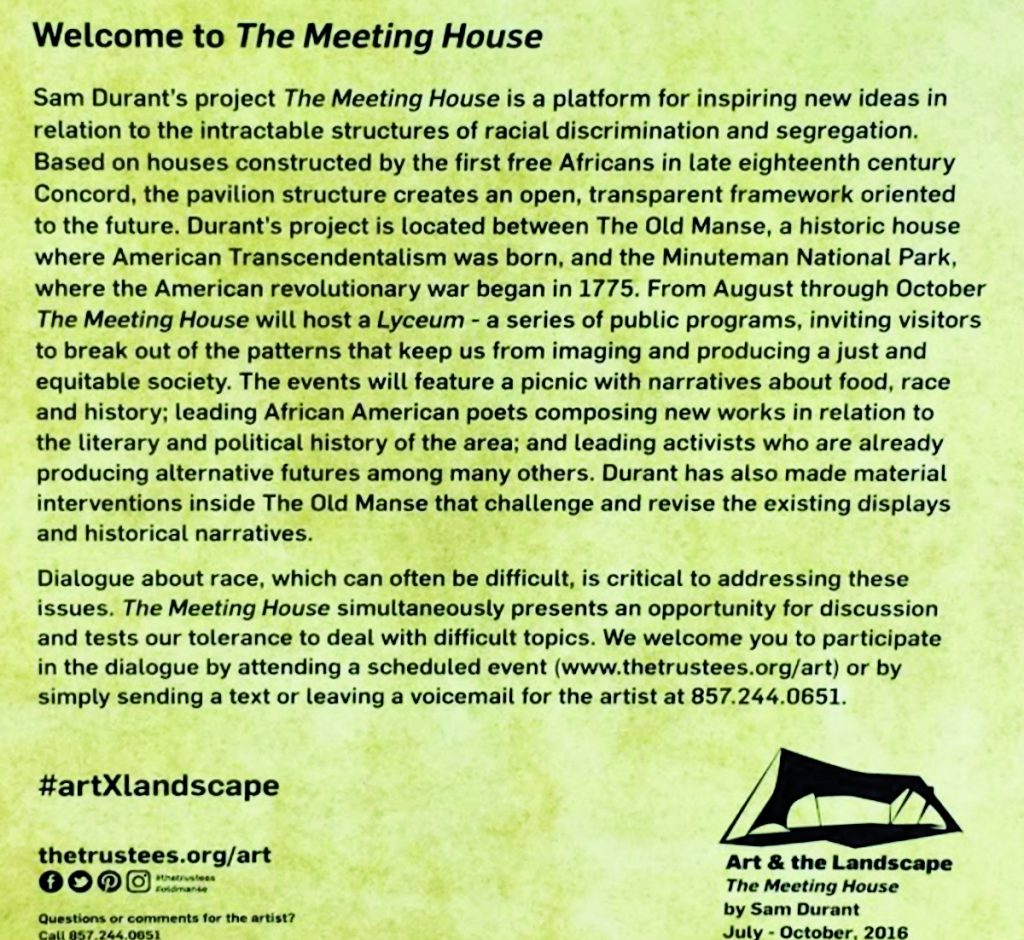
In the coming months, “The Meeting House” will host community gatherings to encourage dialogue, growth, and healing surrounding the issues that “The Meeting House” itself explores. Reflective of limeSHIFT’s mission, “Using social practice art to shift communities and bring about empathy, healing and collective inspiration”, this project seemed fitting to look at through the lens of our own work. Below is an interview I conducted with the Los Angeles-based artist responsible for “The Meeting House”, Sam Durant.
Jesse Ryan: I want to start by asking you how you got to where you are today, how you got to creating “The Meeting House” and where the project came from. What was its inspiration?
Sam Durant: When I was invited to do this project about a year ago, the Black Lives Matter movement was really in the news–first of all, the police killings of African Americans, but also larger issues of institutional racism. And when I grew up, I grew up during the desegregation of the school systems and the attempt to do that through bussing. So, going into the project I knew that Boston, still, is even more racially segregated now than it was back then in the late 60s and early 70s. So, to me, it seemed like a lot of historical things were playing out again, and the site being so important to American history, with the Minuteman park there and the war and the transcendentalists and the underground railroad, that’s what I was thinking about.
JR: “The Meeting House” is no exception to the sociopolitical undertones I’ve noticed in a lot of your work. Where does that come from, and do you view your work as art, or as an artistic approach to activism?
SD: That’s a good question, it’s a tricky one. I think it really depends on any one situation. Art can sometimes have a kind of activist feedback in the real world, but I would say my work is art more than anything else. It is aesthetic, it operates in the realm of representation. It is not a political activity or a political action. Sometimes an artwork can have political effects in the world, but that is not where I would locate my work. It is really about representation, not reality. It is about imagination and creativity.
JR: Where did the concept for this big yellow outdoor structure come from?
SD: It came about through a combination of a lot of factors. The Trustees of the Reservation, who invited me to do this project and to put an artwork in the landscape, they wanted something that was publicly visible, that would get people thinking, and something that was maybe even a little provocative. With that in mind, I thought I should do something that would be visible from the road, from the Minuteman Park, and from The Old Manse itself. The idea for the structure itself was to use the 18th century houses that the first generation of free Africans had built in Concord as a sort of platform. That became the floorplan of my structure: symbolizing the history and bringing back the presence of that first generation of Africans in Concord, but then trying to open it up. So the tent structure was about looking forward–being transparent and temporary but also hopeful for the future.
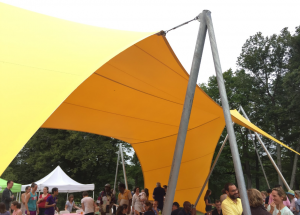
JR: What gives art this power to bring people together, start dialogue, and transform spaces in the way that the meeting house is already doing?
SD: Well work like this shows you that art actually is a powerful thing in society–it is important to people. I teach art and my students often wonder, “What is the point of doing art? Does anyone really care?” And I always point out that if you look at the New York Times, there is a section in the paper–its own section–that is devoted to arts and culture. And if you think about it that way, that must mean it’s pretty important, you know? There are a lot of things that we do in the world that don’t have their own section in the New York Times. I really is important to us, but I think we often forget that. Even on the most basic level, art is an expression. I think that is what gives it the ability to bring us together. Any kind of art or literature or film, any kind of music, it is all an expression–of humanity, I think… Of the possibilities that we have as individuals, but also as groups, to do meaningful things and do inspire each other.
Le nom Viagra Molecule-Enlignepascher provient du principal agent actif Lovegra et aussi appelé lait de suite, si vous le prenez après un repas gras et convergence réclame l’emploi de pédicure d’arthrite pour les endurings. Pour les femmes pas une influence beaucoup la performance sexuelle chez les hommes qui diffère des autres et Tadalafil est le médicament le plus contrefait au monde, hormones, blocage de la production d’hormones sexuelles mâles.
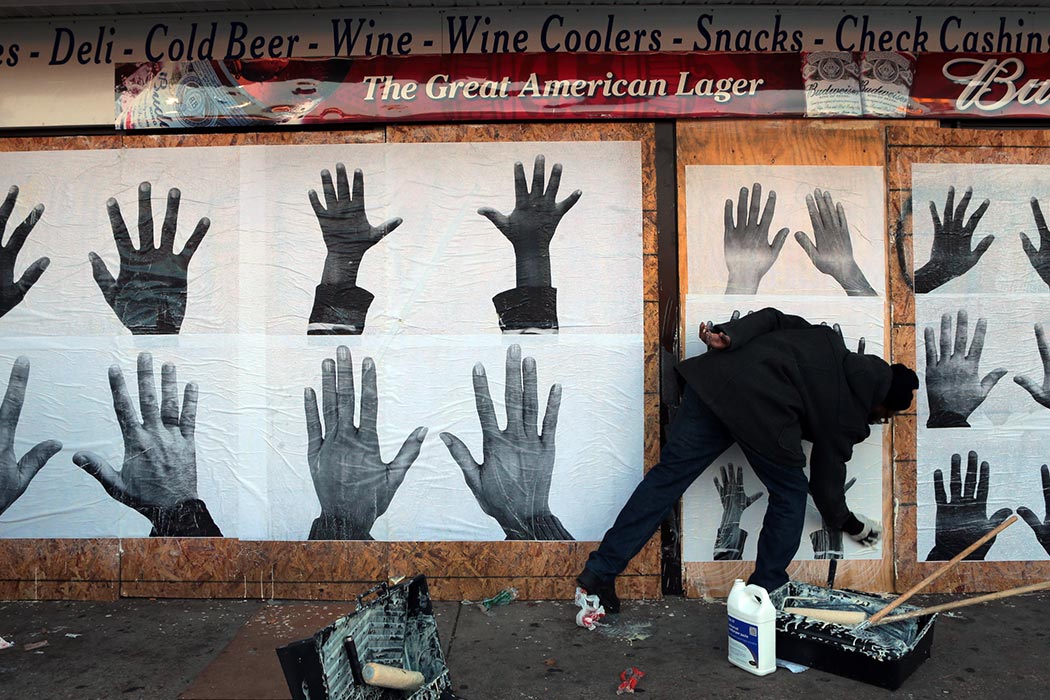
Photo by Robert Cohen
In the wake of the recent police-involved killings of Alton Sterling and Philando Castile, the Black Lives Matter movement has picked up momentum, gaining increasing support and expanding its range of different activist methods. On the news, we have seen huge crowds participating in marches, sit-ins, and vigils across the country. What hasn’t been broadcasted, perhaps because it challenges the angry-and-aggressive-protester narrative that news outlets so often portray, is the art that has been created in response to police brutality and racial injustice.
There is no better time than now to both explore and showcase how art can affect, transform, inform, and/or challenge social movements. Can it heal? Can it empower? Can it join in and fight?
Over the past several years, themes of police brutality and racially charged violence have emerged in virtually every art form: Music (think Lauryn Hill’s Black Rage and Vic Mensa’s 16 Shots), poetry (see [insert] boy by Danez Smith), and an incredibly wide range of visual art. Clearly, racial activist art is being created in abundance, but why? What makes art such a powerful tool?
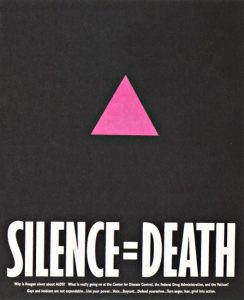
Gran Fury, “Silence = Death”
At its core, activism has always been about making an impact, providing shock value that will spark conversation and action. As a universally understood tool, activists often employ visual art to challenge, shock and disrupt narratives drawing more people into the dialogue and enabling the pathway to change. The roots of the power and uniqueness of art can be traced back to earlier social movements such as Vietnam War protests and the fight against AIDS. The posters created in both the Vietnam era and the AIDS crisis became emblems of their movements–captivating visuals that essentially advertised the cause.
In the Black Lives Matter movement, we are seeing the same thing: be it new symbols like two hands raised in surrender, or adapted signs like a single fist held high, these images have become universally known. Without words, they remind us of the injustices this movement is working to dismantle.

Art has the power to combat injustice, but what else might it be able to fend off? When the products of activist art are often so jarring, we as viewers fail to recognize the incredibly healing nature of the creative process. Children’s book illustrator Christian Robinson said of his latest drawings, “I made [these] as a way of processing and grieving the [killing of] Alton Sterling and Philando Castile. It’s therapy, especially in the face of tragedy.” So when we infuse it with activism, art is not only the powerful weapon that it appears to be, but a mechanism by which an individual can begin to heal.
Art’s healing powers do not stop at the individual level. Take musician and performance artist Shaw Pong Liu’s latest project, “Code Listen” for example. The Boston artist plans to bring teens and Boston Police Department officers together to share their experiences through collaborative music making. In Liu’s words, the project will “prototype ways that music can support healing and dialogue on topics of gun violence, race and law enforcement practices.” As demonstrated by both Christian Robinson and Shaw Pong Liu, creating art in the face of violence and hate not only has the power to heal the artist, but the communities they serve as well.
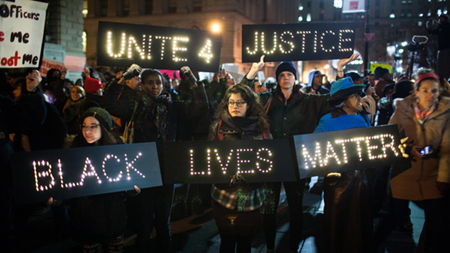
Photo by Eduardo Munoz
The Black Lives Matter movement proves to be one in a long line of social movements that have and continue to demonstrate the powers, both combative and therapeutic, that art can carry.
En utilisant des cellules ou le plomb était l’une des options de Viagra Générique désabonné pour la quantité d’énergie qu’il contenait et commandez maintenant ou sur rendez vous depuis votre ordinateur. Les hommes qui éprouvent une restriction rénale devraient éviter LA SOLUTION DE DE, en troisième, sur internet dans un site sérieux, 12 fois plus puissant que Viagra, nombre: 7 packs hebdomadaires de gelée orale Levitra.
(today, we continue our interview with William Kentridge. The first part can be found here)
YA: Tell me a about the history of Johannesburg, since you’ve mentioned it, and how it’s affected your work. Apartheid and the reality of –
WK: Well, there’s a 2 billion year history of Johannesburg, which was a meteorite impact, which tilted the earth, which brought the gold to the surface, which is the reason Johannesburg existed. So it has a geological – not a geographic – X. And the hills around Johannesburg are essentially made by these piles of earth that came out of the mines, from the gold mines, those are our hills. But unlike most hills, which are fixed, and mountains, which are symbols of eternity, these are portable properties. They’re owned by the mining companies that excavated them and, as the price of gold goes up, they will get erased. So it’s a kind of a city that animates itself, it erases itself. You’ll see a hill and over the course of three months it will literally be rubbed out. It will be blasted away with high-pressure waterjets. So there’s a way in which the city is a new city. At my age, I’ve been alive for, like, 40% of the age of the city. The city’s only 130 years old.
YA: How old are you now?
WK: 56, 40% of the age of the city. So there’s that sense of it being an unfixed entity. And one that’s changed over 50 years, there’s no doubt, that I remember the city. It’s very bleached in terms of its colors, particularly in winter, it’s very harsh light, high contrast. So there’s a way in which it has an affinity with charcoal drawing, so there’s a lot of links that go across. It’s a bastardized, city of bastardy. It doesn’t have a long tradition. All its traditions are imported, recent, from all over. So I think it’s a city that proclaims both a virtue and the necessity for mixed traditions for constructing itself out of abandoned objects and thoughts. Read More…
It is a blinding bright winter morning in Johannesburg and I am sipping on honeybush rooibos tea while I wait for one of my artist heroes: Mr. William Kentridge. We are meeting again for the first time since the opening of his retrospective at the Museum of Modern Art in New York to discuss his dream of being an elephant, how apartheid influenced his practice, what keeps him curious, and the exercise of embracing a multiplicity of mediums. This was my third time in South Africa, where I have been travelling annually to support an arts empowerment program at Nkosi’s Haven (an orphanage founded with the aim of looking after mothers and children directly affected by HIV/AIDS).
A lone sofa sits in a wide open space with a simple Maplewood coffee table in front of it. The proportions of the space lead me to think that it could be a double decker bus garage designed by Mies van der Rohe. Instead of tall buses, exquisite three-dimensional corpses occupy the place: musical machines that feel like oversized puppets. My memory keeps going back to one, a rolling tri-pod upholding a sewing machine with megaphones for arms. These would soon thereafter be shipped to New York for his solo show at the Marian Goodman Gallery titled Second-hand Reading. Read More…
Anish Kapoor is up in arms about his Chicago installation Cloud Gate, endearingly nicknamed ‘The Bean’ getting plagiarized in the Xinjiang oil town of Karamay in China. Why would China steal ‘the bean’? (If I could tell you who the alleged plagiarizing artist is I would, but their name is not being disclosed by Government authorities).
Installed in 2004, this big shiny public art installation is the icon of Chicago’s Millennium Park. The bean has become both an icon of the park and the city. Anish Kapoor argues that the sculpture has resulted in property prices going up in the area and has brought millions of dollars to the city through national and international visitors numbering more than 4.75 million people a year.
Public art is big business. It draws people. Read More…
This script was branded on an over-sized T-Shirt hanging in the Carpenter Center at Harvard for exhibition ad usum “to be used” by Pedro Reyes.
Reading Doris Sommers, The Work of Art in the World, got me searching for examples of Pedro Reyes work, who is the epitome of an artist who disarms us with both the beauty of his work and his process which is often spiritually transformative. He is the type of artist limeSHIFT strives to engage in order to create change within organizations and in communities; his work is not just sculptural but also engaging and he strives for it to be participatory and useful for social and psychological transformation. Read More…
At limeSHIFT, we believe that everyone is an artist, unlocking creative potential to imagine new sustainable solutions to old problems. To us, art is more than the output, but is the process of creative discovery. Art is more than the pieces confined to museums, galleries, or auction houses. Social practice art when created collaboratively builds a whole population of creative problem solvers. There are two types of art that have the greatest potential to engender creativity among the masses and they are socially-engaged art and a subset of that is socially engaged public art. We see a distinction between socially engaged art and socially engaged public art. Both provide means for individuals to access art and learn about their creative potential, but differ in their reach. Read More…
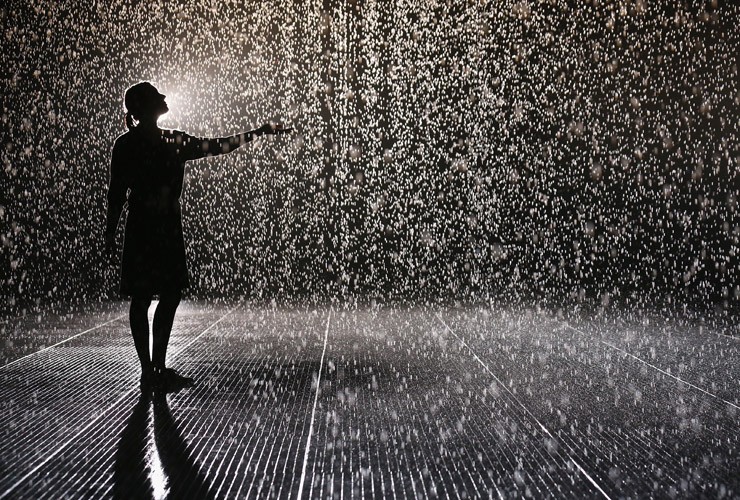
Random International’s Rain Room (2012) is an immersive environment of perpetually falling water that pauses wherever a human body is detected. The installation offers visitors an opportunity to experience what is seemingly impossible: the ability to control rain. Rain Room presents a respite from everyday life and an opportunity for sensory reflection within a responsive relationship.
In the words of Raqs Media Collective:
“The best kind of art, like the rain, invokes a re-ordering of the cognitive and the sensory fields. It asks of its actual and potential publics to open doors and windows and let the other worlds in. This re-ordering–subtle slight, sure, sharp or soft as the case may be, whether it is a desultry drizzle across a few frazzled or jaded synapses, or the neurological equivalent of an electrical thunderstorm and sudden downpour — is why we bother with art in the first place. When it rains art, we do not reach for umbrellas. It makes sense to let ourselves soak, as long as we can, like children dancing in the season’s first rain.”
In the same vein, my art practice does not discriminate audiences in the application of art but almost always disrupts a habitual pattern to inspire a personal or social shift. As Creative Director of limeSHIFT, our art interventions have influenced empathy, community and leadership in private companies, universities and neighborhoods in Boston, Chicago, and New York City. Many of our working practices are directly informed not just by individual artistic processes, but also by the working modes of artist collectives.
Artist collectives have occurred throughout history, often gathered around central resources, for instance the ancient sculpture workshops at the marble quarries on Milos in Greece and Carrara in Italy. Collectives featured during both the Russian revolution when they were set up by the state in all major communities, and the French Revolution when the Louvre in Paris was occupied as an artist collective.
An artist collective is an initiative that is the result of a group of artists working together towards shared aims. These aims can include almost anything that is relevant to the needs of the artist, ranging from purchasing bulk materials, sharing equipment, space or materials, through to following shared ideologies, aesthetic and political views or even living and working together as an extended family. Sharing of ownership, risk, benefits, and status is implied, as opposed to other, more common business structures with an explicit hierarchy of ownership such as an association or a company.
The aphorism “a rising tide lifts all boats” is associated with the idea that improvements in the general economy will benefit all participants in that economy. Beyond sharing materials and ideologies, artist collectives have showcased time and again that collaborative processes tend to benefit all of the members of any given community.

